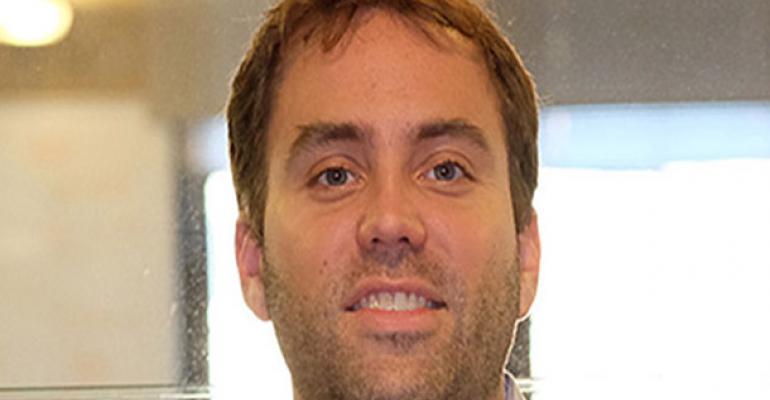 From small conferences to movie premieres, events are a great way to build relationships with target customers. An event does come with risks, though--it’s one of the most expensive marketing activities, and it can be difficult to measure your return. However, the proper use of branded photo-sharing via social media can help event planners and marketers improve their ROI by increasing an event’s typical reach and finding brand advocates. Here are five ways event marketers can optimize branded photos:
From small conferences to movie premieres, events are a great way to build relationships with target customers. An event does come with risks, though--it’s one of the most expensive marketing activities, and it can be difficult to measure your return. However, the proper use of branded photo-sharing via social media can help event planners and marketers improve their ROI by increasing an event’s typical reach and finding brand advocates. Here are five ways event marketers can optimize branded photos:
1. Drive social advocacy by consumers and develop new brand advocates. In April, Facebook announced that users will now see more meaningful content in their news feeds. Put simply, users will see more updates from friends and fewer updates about what another friend “liked” or commented on. The social network warned that post reach and referral traffic could potentially decline because of this.
With fan page reach decreasing, standing out on a news feed is now more challenging than ever, but companies can overcome this by concentrating on their current customers. If users are sharing their company-branded event photos via social media, their friends and family members will see them, too. They could possibly comment on them or share the photos themselves, increasing engagement and brand awareness. By focusing on peer-to-peer social sharing, advocacy and word-of-mouth endorsements, brands can continue to reach a larger network and build new relationships.
2. Increase brand association in a scalable way. When planning or marketing an event, it’s important to attribute and associate your brand or company event with the themes or emotions created by the event in a large scale way. Subaru, for example, aims for “earthy” and “tough” themes and emotions in its brand messaging. To further convey this, they sponsor Down & Dirty Obstacle Races in different cities across the U.S. At last year’s races, photo branding garnered more than 660,000 impressions, 750 email addresses and 421 new Facebook likes for Subaru.
Photo activations at events can help brands associate with some of the best life experiences in a scalable way by passing authentic, visual messages person-to-person on a one-to-many basis. Aside from increased social stats and overall reach, brands also have access to niche, user-generated content to showcase in future advertising campaigns that is in line with the themes and emotions the brands are looking to associate with.
3. Ignite on-site engagement by using social media walls or displays to showcase the branded photos that are captured and shared. At events, successful branding and sharing goes beyond the hashtag. Showcasing the photos captured and shared on a live feed or social display wall is a great way to excite attendees and encourage others to engage by taking photos and sharing them online. Major sports games, for example, often have photo booths where fans can take photos with mascots. These photos then show up on the stadium or arena’s big screen throughout the game. This kind of engagement builds excitement at the event in real-time for the brand because it shows who exactly is attending the event while they’re there.
4. Incorporate lead capabilities into branded photo sharing. It’s no longer good enough to only engage individuals on-site if you aren’t also capturing their data (in a secure and transparent way, of course). Don’t just take pictures and hand out a card for them to check out a website or set up a photo booth with no data-capture capabilities. Integrating lead generation capabilities into branded photo activations will help fuel a client’s sales pipeline with high-quality leads, transforming their events into initiatives that measurably drive lead cultivation and future sales. If a car dealership has a photo booth at its annual trade show, for example, attendees should be able to take a photo and enter their information in one simple, smooth process. This integrates an event’s impact into other marketing and sales campaigns, including display ads, email marketing and more.
5. Integrate contest campaigns into branded photo activations. Brands can boost on-site engagement and build long-term relationships through incentives by integrating social contests and sweepstakes. According to a study done by social media marketing agency TAMBA, 94 percent of respondents stated that competitions have introduced them to brands they would otherwise not have known about. The study also showed that competitions can enhance brand perception, increase and maintain brand reach and engagement, and encourage word-of-mouth recommendations. For instance, newly engaged couples might compete for Facebook photo likes to win a free honeymoon from Royal Caribbean. A contest like this both excites contestants with prizes and gets a brand’s name out there (in this case, Royal Caribbean).
When marketers take the time and money to invest in a promotional event, they want to know they’re getting the most bang for their buck. By using branded photo sharing via social media, event marketers can increase brand awareness, engagement and loyalty with company customers.
Joe Matthews is the co-founder and CEO of Tagkast, a social advertising platform that turns event photography into branded content. Before that, while attending Northwestern University Kellogg School of Management, Joe co-founded Poggled, an events and daily deals site for nightlife. Before Kellogg, Joe worked in investment banking and retail consulting.





